





| Northern Lapwing (Vanellus vanellus ()) |






|
|
Scientific name: Vanellus vanellus () Common name: Northern Lapwing Other names: Peewit, Green Plover French name: Vanneau huppé Order: Charadriiformes Family: Charadriidae Size: Body size: 28 to 31 cm; Wingspan : 70 to 76 cm; Weight : 150 to 310 g Habitat: Open areas with bare ground or short grass: coastal marshes or fresh water marshes, meadows and cultivated fields. Food: Insects, spiders, ground worms and other small invertebrates. It can also feed on grains. Nesting: The nest is a small ground scrape. Females lay 4 eggs between early March and April. There may be late replacement broods if the previous ones fail. Migration: Partially migratory. Eastern European birds winter in western Europe. Northern Asian birds move southwards to India and China. Geographic area: Temperate Europe, temperate Asia, North Africa. Some vagrant birds seen in North America. |
The upper side and the tail are dark green. The underside of the body is white. The under side of the tail is orange. The head bears a typical long crest and a wide pale eye stripe. The legs are pink and the bill is black. The wings are wide and round. Northern lapwings gather in large flocks and fly in very compact groups often suddenly changing of direction. |
| [To know more about the Northern Lapwing] [Next picture] [Top] |
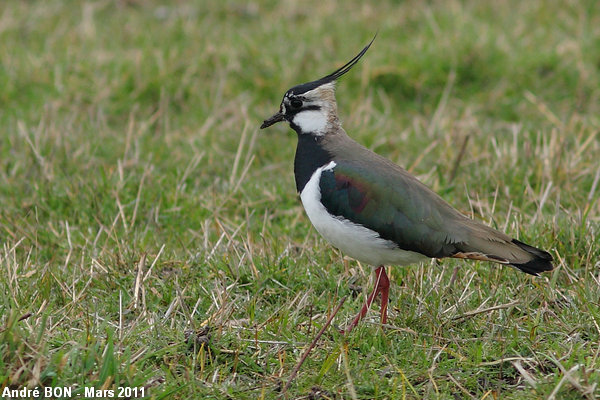
|
This Northern Lapwing has been very less shy than those I am used to observing in winter near Paris. |
| [To know more about the Northern Lapwing] [Next picture] [Previous picture] [Top] |
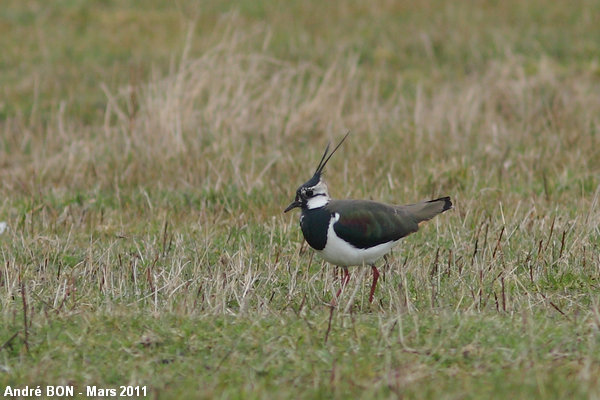
|
You can clearly see here the feathers forming the long crest. |
| [To know more about the Northern Lapwing] [Next picture] [Previous picture] [Top] |
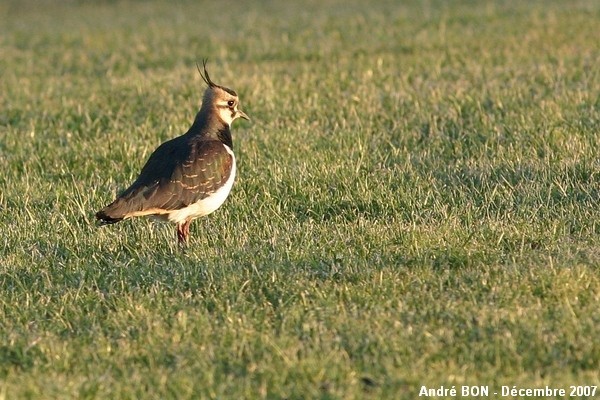
|
On this late December the weather became colder. The Northern lapwings have spread throughout the cultivated fields and have come near the roads. I have observed this one in the center of a roundabout. |
| [To know more about the Northern Lapwing] [Next picture] [Previous picture] [Top] |
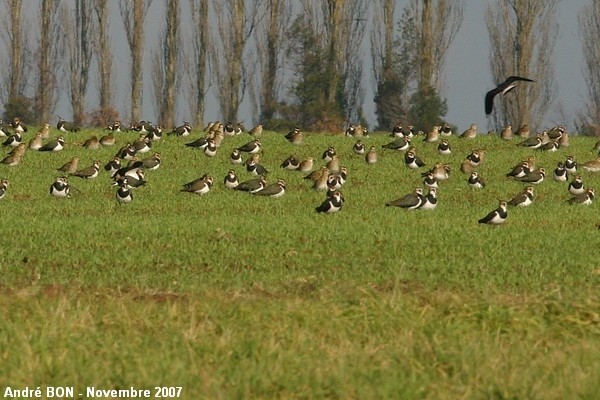
|
Large flocks of Northern Lapwings are used to landing on cultivated fields in winter. Years after years I have noticed that they are used to landing at the same places. Northern Lapwings are here accompanied by European Golden Plovers. |
| [To know more about the Northern Lapwing] [Next picture] [Previous picture] [Top] |
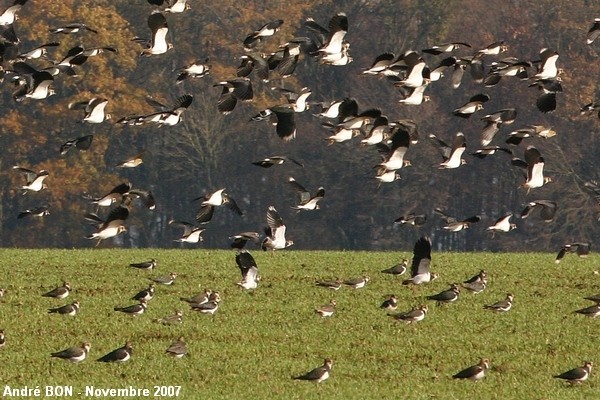
|
The Northern Lapwing's flight is rather nice to observe. Flocks are performing synchronized acrobatic figures. The bright white colour of the under part of the wings can cause a problem to inexperienced photographers (like me). It is not easy to find the correct exposure settings. |
| [To know more about the Northern Lapwing] [Previous picture] [Top] |
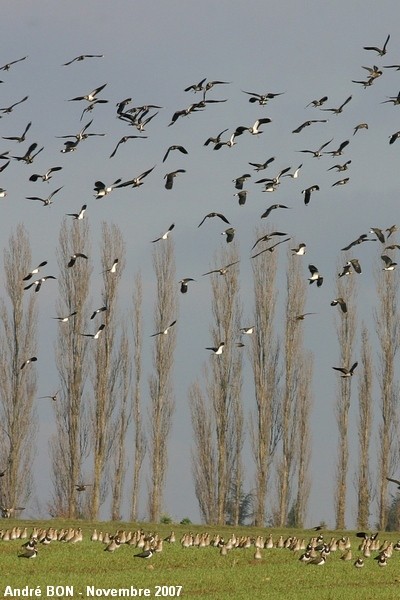
|
As Northern Lapwings always land on open areas, the approach is not very easy. |